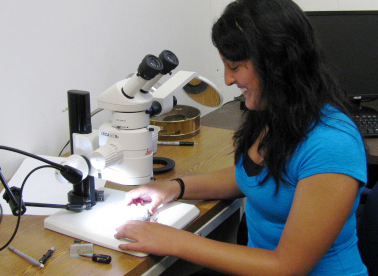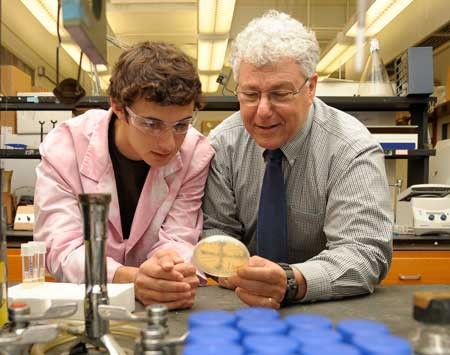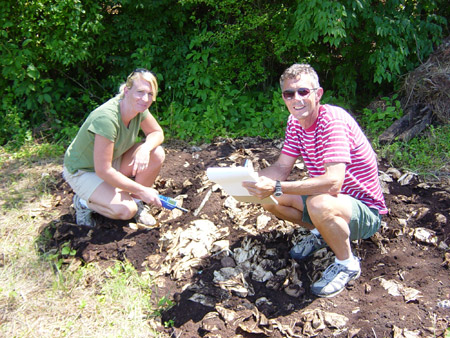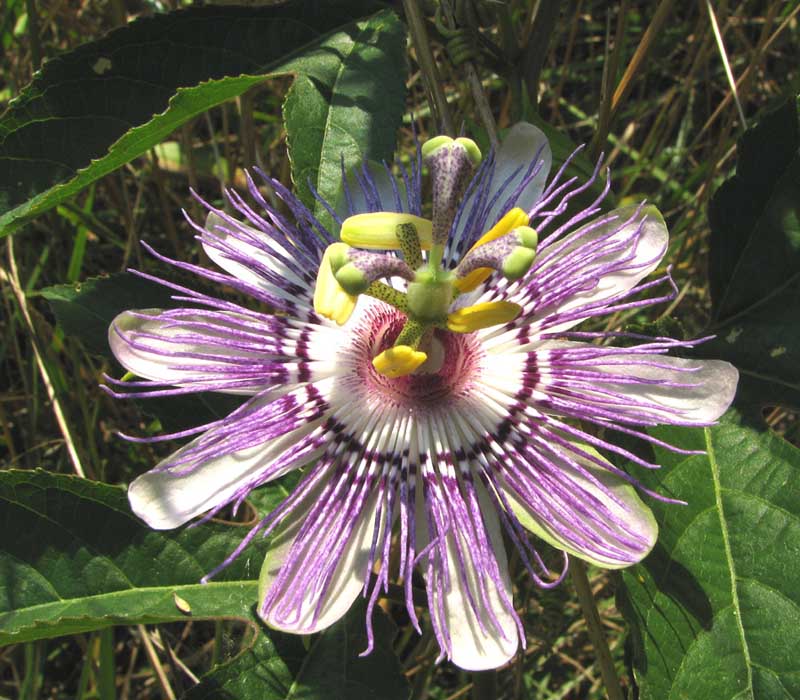Category: Natural Sciences
It is a question that has puzzled evolutionary biologists for years: Why did we stop being promiscuous and decide to settle down to start families? Sergey Gavrilets, professor of ecology and evolutionary biology, may have found the answer, and it lies in the power of female choice.
Imagine how lucky you would feel to discover and hold one treasured fossil in the palm of your hand. Now imagine holding 240 fossils. Emily Napier did just that her senior year when she conducted research on edrioasteriods entombed in a rock, and the results she found on the estimated 280 million-year-old, starfish-like fossils were surprising.
Jeff Becker says his scientific research is emotionally driven. He goes to work each day hopeful that the basic research conducted in his laboratory has the potential to benefit humanity on a large scale. In a world where life-threatening fungal infections are increasing and there is a deficit of pharmaceutical antifungal drugs, Becker trusts that his efforts really matter.
Most of us give wide berth to food waste bins at cafeterias and restaurants. But Professor Mike McKinney views food waste differently—he sees an opportunity to teach important lessons in science and environmental conservation through composting. This fall his students will launch a compost education program in local schools that will take lessons learned on campus to the larger community.
Alexei Sokolov is intrigued by soft materials. “Soft materials, by definition, can change—that’s why we call them soft materials,” he explains. Change means the molecules in the materials move, and if he can figure out how they move, he will have important clues to controlling and manipulating their movement. That knowledge is the key to designing new materials with unique properties.
Smartphones have opened up an entire new realm of possibilities for scientific and educational applications, and with their rudimentary programming, anything is possible. Professor Michael Guidry has experienced that himself, and now he is sharing his insights on programming for the Android platform in an undergraduate course.
Now in its 61st year, the Wildflower Pilgrimage has welcomed nearly 1,000 nature lovers to a celebration of spring and wildflowers in the Great Smoky Mountains; but for those who are unable to stop and smell the flowers, the UT Herbarium website features a searchable database that plant enthusiasts and students can explore and admire year round.
Earlier this semester, Sarah Jeanne Wood showed visitors at the USA Science & Engineering Festival in Washington, D.C., just how variable a single plant species can be. This UT undergraduate’s booth at the National Mall was a hit for the 500,000 people who attended the nation’s largest science festival to date.
The way things are now trending, without more teachers in the sciences, technology, engineering, and mathematics (STEM subjects), the economic future of Tennesseans could be bleak. Fortunately, the college is teaming with UTK’s College of Education, Health, and Human Sciences in the VolsTeach program, which aims to produce more STEM teachers at a faster rate to help us build and maintain an industry-attractive workforce.
Toxoplasma, “toxo” for short, is a parasite that can and does infect just about any kind of warm-blooded animal—including about one-third of the human population. Most infected humans show few signs of illness, but in some cases, including immunosuppressed people and unborn fetuses, toxo can cause serious damage or even death.
From an Oak Ridge High School tailback to a senior policy analyst for the White House, the 2010 Distinguished Alumni recipient for the Department of Physics and Astronomy, Dr. Paul G. Huray, shares his story about taking risks and defying odds.
NIMBios is bringing mathematicians and biologists from around the world to UTK to participate in finding creative solutions to pressing problems from animal disease to wildfire control. Recently a group of researchers assembled to collaborate on the problem of managing feral swine and Pseudo-Rabies in the Great Smoky Mountains National Park.


















